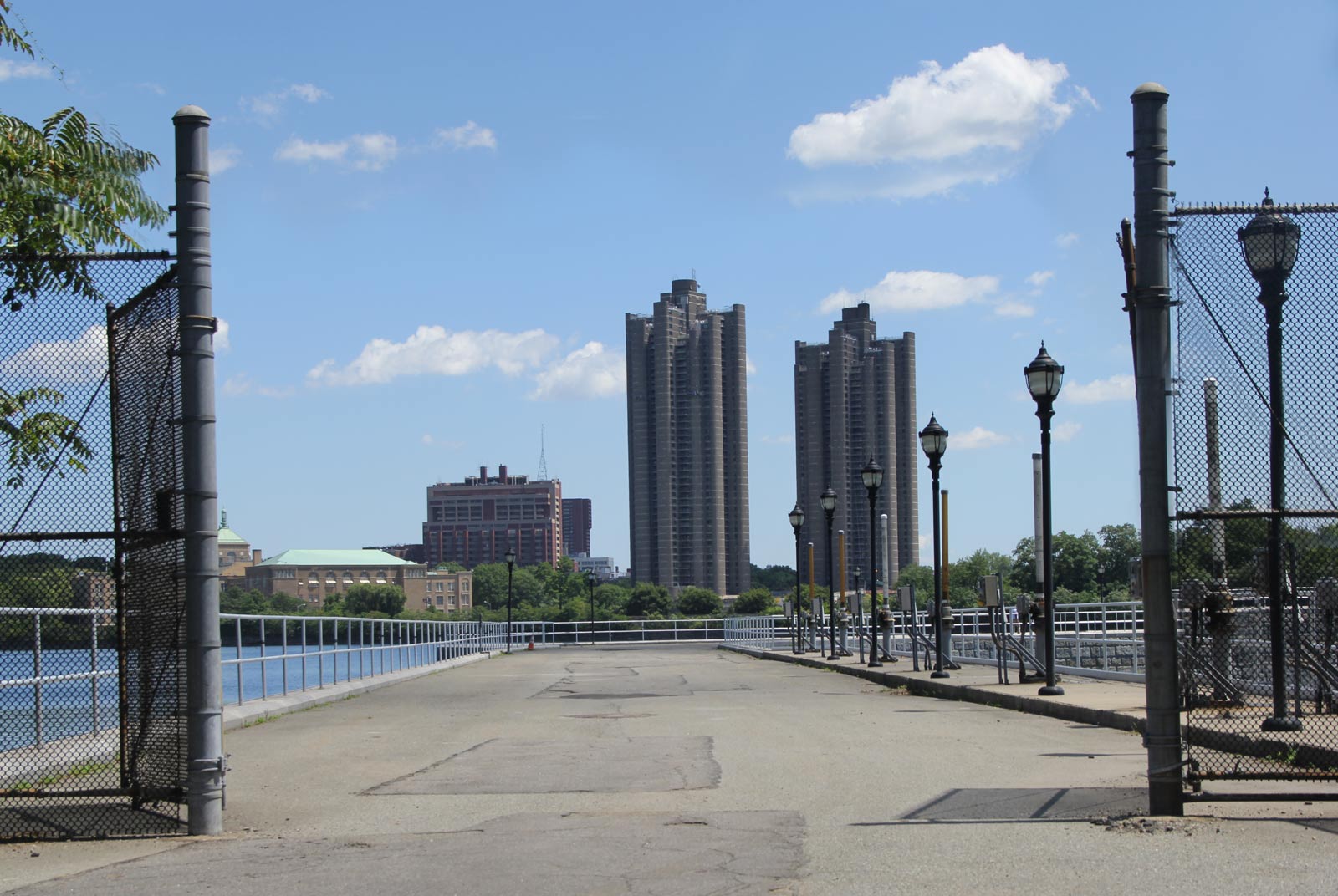
 Jerome Park Reservoir, July 31, 2015, looking east towards
DeWitt
Clinton High School, North Central Bronx Hospital, and Tracey Towers
(the Bronx's two highest buildings).
Jerome Park Reservoir, July 31, 2015, looking east towards
DeWitt
Clinton High School, North Central Bronx Hospital, and Tracey Towers
(the Bronx's two highest buildings).
The Reservoir dates from 1906. It was not built by the New Deal but ”The WPA funded a significant number of New York City projects relating to the water system, including surveys, water main installations, and the alteration, repair, and construction of buildings ... WPA work force moved into the area to complete many Reservoir repairs and new construction.“[1] New construction included at least three, and possibly all seven, of the red brick and stone gate house superstructures. The Reservoir is the dominant feature of the area and New Deal projects are to be found all around its perimiter. It is difficult to photograph due the high chain-link fences that have protected it since World War II. Public access to much of the surrounding once-public parkland is an ongoing issue.
References:
- Final Supplemental Environmental Impact Statement for the Croton Water Treatment Plant, nyc.gov archive. This is Section 8.2 of The Croton Water Filtration Plant Project: Final Supplemental Environmental Impact Statement, July 16, 2004.
- Appendix D.3 Historical and Archaeological Resources, Harlem River Site, Bronx, 1998, at s-media/nyc.gov.
- Quilty, Patrick, "WPA Projects in New York City", Municipal Engineers Journal, Vol.25:106-107 (1939)
- Soll, David, Empire of Water, An environmental and Political History of the New York City Water Supply, Cornell University Press (2013).
- National Register of Historic Places Registration Form for Jerome Park Reservoir, March 28, 2000 (Lehman College historical archive): “The construction of permanent superstructures [for the gatehouses] was postponed for over three decades after the completion of the gate houses. The brick superstructures of the gate houses were constructed in 1938 by the WPA in the restrained Art Deco style characteristic of public works projects of that era. They are of red brick masonry with limestone and granite trim at sills, copings, string courses, and window and door architraves. There are also carved limestone panels, inset in the brick field or included in the coursing of limestone bands, with inscriptions identifying the reservoir and the gate houses. Of particular interest are the superstructures of Gate Houses Nos. 5 and 7.”